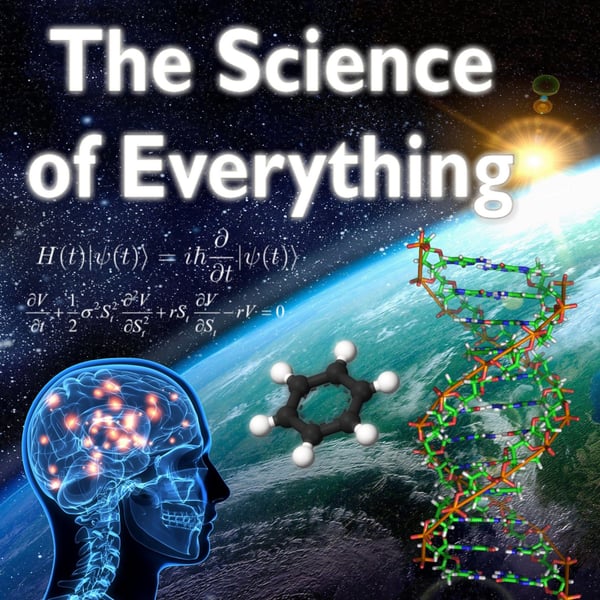Episode 147: Genetic Mutation and Repair
The Science of Everything Podcast
James Fodor
4.8 • 750 Ratings
🗓️ 31 August 2024
⏱️ 74 minutes
🧾️ Download transcript
Summary
Transcript
Click on a timestamp to play from that location
| 0:00.0 | Oh, wow, oh, oh, wow, oh, wow, oh, wow. |
| 0:13.0 | Oh, wow. |
| 0:15.0 | Oh, wow. Hello, you're listening to the Science of Everything podcast, episode 147, genetic mutation and repair. |
| 0:41.1 | I'm your host, James Fodor. |
| 0:43.3 | Now, in this episode, what we're going to do is discuss how genes and genetic material become |
| 0:49.1 | mutated or changed over time and the various mechanisms that the body has developed to correct and repair those. |
| 0:57.0 | So specifically we're going to look at different types of mutations and their causes, |
| 1:01.5 | the effects that they have on DNA sequence, and then the various repair mechanisms that have been |
| 1:07.3 | developed. So we're going to talk about base excision repair, DNA mismatch |
| 1:11.0 | repair, nuclear tight excision repair, and double-strand brake repair, so four different |
| 1:15.2 | mechanisms. And we'll conclude by discussing large chromosomal changes. So these are sort of |
| 1:21.1 | bigger changes to the genome, including deletions, duplications, inversions, translocations, and unequal crossing over. |
| 1:30.3 | So, recommended pre-listing is episodes 34 and 35 when we looked at DNA structure and function. |
| 1:35.6 | That will be quite useful to understand the basics of DNA structure and function for this episode, |
| 1:42.9 | because we're going to be talking about quite a lot of |
| 1:44.8 | detail with regard to the kind of biochemistry and cellular biology of some aspects. |
| 1:51.5 | Another episode that will be helpful is episode 44 on cell division, particularly when we |
| 1:56.1 | discuss chromosomal changes, many of which relate to the processes of cell division. |
| 2:02.1 | So, without further ado, let's get started and begin by talking about types and causes of mutations, |
| 2:07.8 | and a natural point to start there is by asking what is a mutation? |
| 2:13.3 | So mutation is an alteration in the nucleic acid sequence of the genome of an organism. |
| 2:18.3 | So the genome is the set of all genetic material that an organism has. |
... |
Please login to see the full transcript.
Disclaimer: The podcast and artwork embedded on this page are from James Fodor, and are the property of its owner and not affiliated with or endorsed by Tapesearch.
Generated transcripts are the property of James Fodor and are distributed freely under the Fair Use doctrine. Transcripts generated by Tapesearch are not guaranteed to be accurate.
Copyright © Tapesearch 2025.

